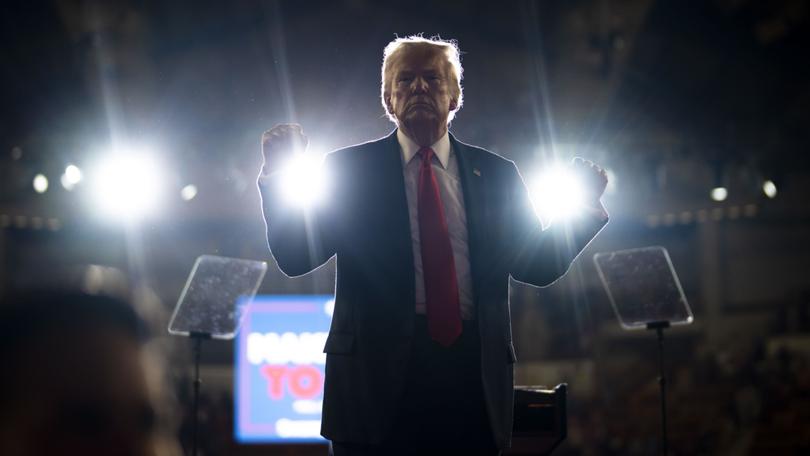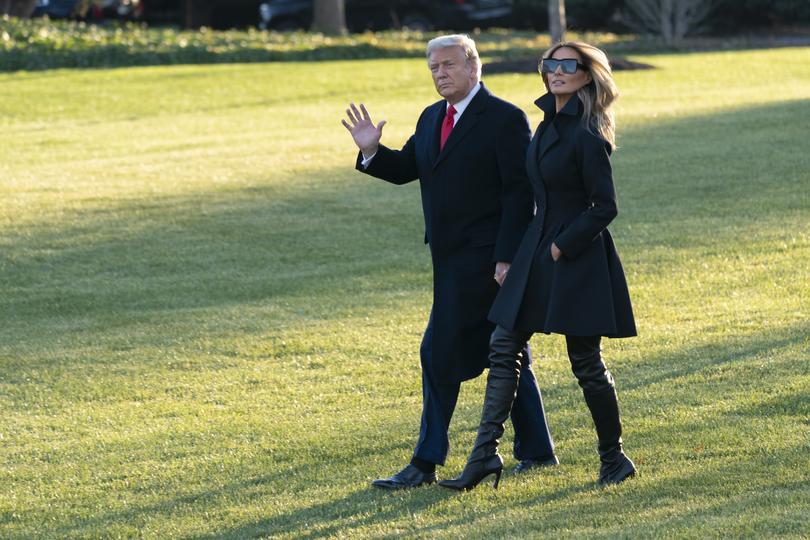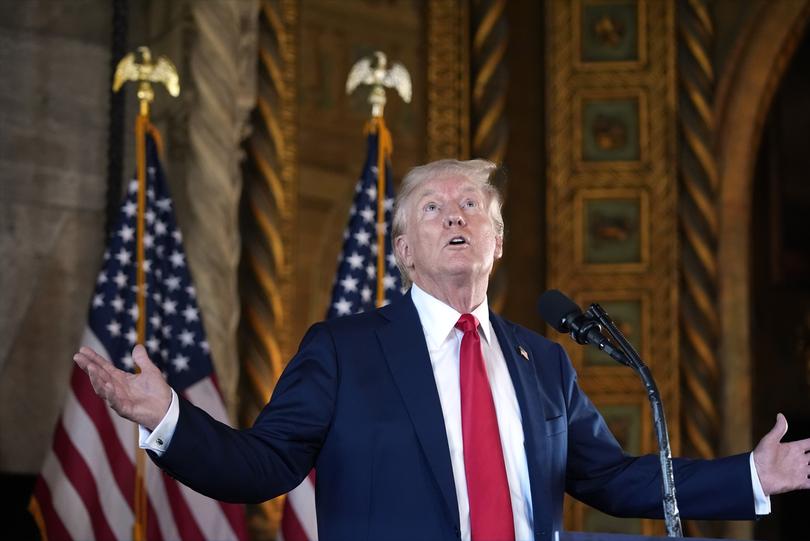Donald Trump: What the Republican Party might look like if Trump loses

Donald Trump is behind. He trails in the pivotal post-industrial swing states and is treading water in the Southern and Sun Belt states — Arizona, Georgia and Nevada — that could help him find an alternative path to 270 electoral votes.
In just a few months, Trump may join the exclusive club of two-time presidential losers.
Of course, it is still too early to make any real prediction about November. But the sharp reversal in Trump’s electoral fortunes raises an obvious question worth thinking about now: If Trump loses, and perhaps especially if he loses badly, what comes next for the Republican Party?
Sign up to The Nightly's newsletters.
Get the first look at the digital newspaper, curated daily stories and breaking headlines delivered to your inbox.
By continuing you agree to our Terms and Privacy Policy.It is rare in American political history for a single figure to dominate a party as thoroughly as Trump does the modern Republican Party, without delivering a string of electoral wins or otherwise reshaping the political landscape.
Andrew Jackson, Abraham Lincoln, Franklin Roosevelt and Ronald Reagan all defined and redefined their respective parties, but they did so in the context of strong political organizations and movements that could deliver consistent, and sometimes crushing, victories over their opponents.
This is not the case with Trump.
One of the defining attributes of his leadership of the Republican Party is the extent to which he has so thoroughly reshaped Republican identity while leading Republican politicians to a string of election defeats across the nation.
After his surprise win in 2016, Republicans either lost or underperformed in 2018, 2020 and 2022.
Trump himself was a one-term president, the first since George H.W. Bush lost his bid for reelection in 1992. And the closer Republican candidates tie themselves to Trump in competitive elections, the more likely it is they will lose, from Kari Lake in Arizona to Doug Mastriano in Pennsylvania.

As striking as the relative electoral weakness of the Trump-era Republican Party is its total inability to either govern or police the boundaries of its coalition.
Trump himself has no program beyond his own prejudices and impulses. “Build the wall” and “mass deportation now” reflect a deep-seated hostility to non-white immigrants that has no basis other than rank bigotry. “Stop the steal” and Trump’s broader obsession with so-called election integrity is nothing more than an attempt to operationalize his core belief that he cannot actually lose an election, or anything for that matter.
Fittingly, the Trump-led Republican Party declined to devise a platform for the 2020 presidential election and produced a set of Trump-esque slogans for its 2024 one. To the extent that there is a Republican agenda, it is a product of the hard-right ideologues and conservative organizations that see Trump as a willing vessel and vehicle for their own interests.
Trump’s leadership has also occasioned the total collapse of the boundaries (such as they were) separating the far-right fringe of American politics from its mainstream.
The former president provides license for — and inspiration to — a large crop of right-wing extremists who disdain democracy and openly fantasize about the use of violence to eliminate their political opponents.
“Some folks need killing,” Mark Robinson, the Republican Party’s nominee for governor in North Carolina, declared at a church event in June.
Trump’s Republican Party is a paradigmatically “hollow” party, according to the argument laid out by political scientists Daniel Schlozman and Sam Rosenfeld in “The Hollow Parties: The Many Pasts and Disordered Present of American Party Politics.”
For all its activity, a hollow party “demonstrates fundamental incapacities in organizing democracy.” Its zombielike commitment to tax cuts and deregulation notwithstanding, the Republican Party from this vantage point is little more than “a personal vehicle for Trump’s vendettas and fantasies.” It offers nothing to the public, they observe, “besides praise for its leader.”
So what happens if and when that leader loses yet another national election for his party? What happens when, in the face of conditions that seem as favourable as they could be, the Republican coalition led by Trump still falls short?

There is not much precedent for the kind of political introspection that might result if Trump loses in November.
When the long-serving Kentucky statesman Henry Clay lost his bid for the White House a third time in the presidential election of 1844, the Whig Party entered a period of crisis and profound soul-searching that would shape its decision-making for the remainder of its time in American political life.
“So superior had Whigs’ candidates and their position on the issues seemed that many believed that if they could not win in 1844, they could never win,” historian Michael F. Holt explains in “The Rise and Fall of the American Whig Party.”
“The unexpected defeat,” Holt goes on to say, “forced disillusioned Whigs to reassess the purpose, the principles and the viability of their party.”
Some Whig Party post-election recriminations may sound familiar to modern ears.
Many Whigs, Holt notes, blamed “Democratic fraud and demagoguery” for their loss. Others said that Democrats, who appealed to the votes of Catholic immigrants disturbed by rising nativism, had profited from a “massive and illegal naturalization of ineligible immigrants” and could not have won without the “spurious and illegal foreign vote.”
Some Whigs went as far as to contemplate party suicide, floating plans to dissolve the party and reconstitute it under a new name. Less despondent Whigs urged their allies to focus their attention on the next round of state elections, where they might prevail. The Whig Party was still strong, they said, and the public would soon reject their new Democratic president.
“The nominal victory of our opponents, won by false pretences and fraudulent voting, will yet prove their ruin,” said Horace Greeley, a prominent Whig and editor of The New York Tribune.
The Whigs did not retire their name or their party. But they did struggle to build a coalition that could win office, ultimately choosing to nominate, in the 1848 election, Zachary Taylor, hero of the divisive Mexican War, in an effort to appeal to as many voters as possible on as non-ideological a basis as possible.
A defeated Republican Party in November would not be in as dire straits as the Whig Party was 180 years ago. It would still control at least half the nation’s governor’s mansions and may well control either the Senate or the House of Representatives.
On the other side, the same structural advantages that would enable the party to weather a Trump defeat and exercise political power may make it all the more difficult for Republicans to pivot towards winning national majorities.
If you can hold power through the counter-majoritarian structures and institutions of the American system, why would you work to build a broader coalition than the one you already have?

There is also the issue of Trump himself. He cares less for the fate of the Republican Party than he does for his personal and pecuniary interests.
He has no reason to loosen his grip on the party and every reason to keep it in hand.
The real question is whether there are Republicans who could pry it away from Trump. The failure of any Republican to successfully contest his leadership or offer a path away from his personal domination of the party is evidence enough that the answer is no.
The anticlimactic truth is that in the wake of a third Trump nomination and a second Trump defeat, the Republican Party would simply stumble along, stuck in his orbit and too weighed down by his gravitational pull to escape.
In 2016, the Republican Party was too weak to stop Trump, and after eight years of his leadership, it is too weak to break the hold he has over most of its voters and many of its elected officials. If Trump does lose in November, the Republican Party will still be his, for as long as he wants it to be.
This article originally appeared in The New York Times.
© 2024 The New York Times Company
Originally published on The New York Times
